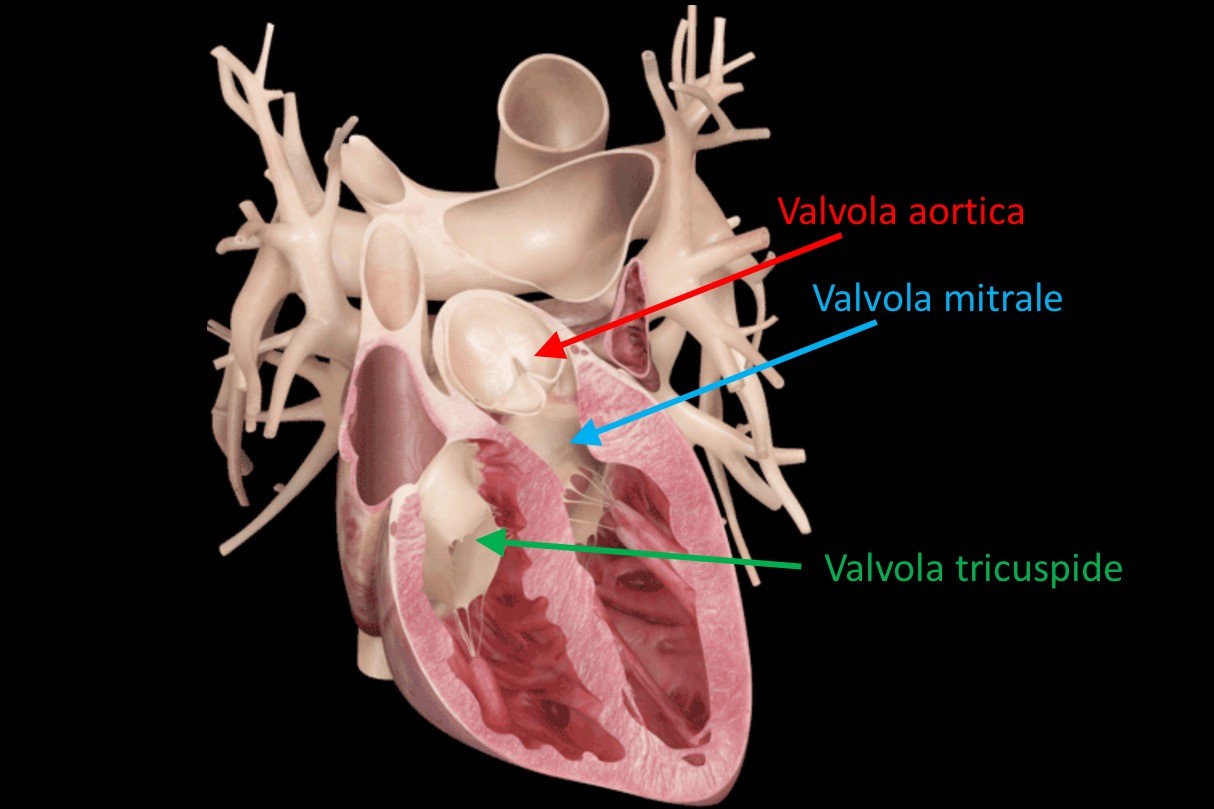
Congenital pulmonary valve stenosis and Ebstein's anomaly
Congenital pulmonary valve stenosis’, or ‘congenital pulmonary stenosis’, is a congenital (i.e. already present at birth) heart disease characterised by an obstruction of the blood outflow tract from the right ventricle to the pulmonary trunk and thus to the pulmonary arteries and pulmonary circulation
Pulmonary valve stenosis is the most common cause of right ventricular outflow obstruction and generally presents as an isolated congenital lesion
Fusion of the pulmonary flaps creates a state of pressure overload and results in right ventricular hypertrophy.
Some patients develop discrete hypertrophy of the infundibulum below the pulmonary valve, further contributing to outflow obstruction.
Symptoms and signs of congenital pulmonary valve stenosis
Unless the valve is severely stenotic at birth, most individuals with this anomaly live a normal life until adolescence or early adulthood.
The development of symptoms depends on the severity of the stenosis and right ventricular function.
Patients with mild to moderate stenosis are generally asymptomatic and rarely present with the complications associated with this defect.
Patients with moderate to severe obstruction often complain of asthenia and worsening dyspnoea (difficulty breathing).
If right ventricular dysfunction occurs, signs and symptoms of right ventricular failure may be present.
QUALITY AED? VISIT THE ZOLL BOOTH AT EMERGENCY EXPO
Diagnosis of congenital pulmonary valve stenosis
The diagnosis is based on anamnesis, objective examination and various tests.
On objective examination, the patient with severe stenosis presents a right ventricular impulse on palpation of the precordium.
The Sl tone is usually normal and is followed by an opening click that becomes more intense with exhalation.
The P2 tone decreases and is delayed with increasing severity of stenosis.
The characteristic murmur of pulmonary stenosis is a systolic ejaculatory murmur that is best perceived at the left upper sternal margin and increases with inspiration.
As with aortic stenosis, a late-peaked murmur indicates more severe stenosis.
In patients with severe right ventricular outflow obstruction, a prominent a-wave at the jugular venous pulse and a right heart S4 tone may also be present.
On electrocardiogram, hypertrophy of the right ventricle and right atrium is noted.
On chest X-ray, post-stenotic dilatation of the pulmonary trunk or left pulmonary artery is noted; dilatation of the right atrium and right ventricle is also noted.
For asymptomatic patients with mild pulmonary stenosis, therapy is limited to endocarditis prophylaxis
Patients with moderate stenosis (peak gradient > 50mmHg) are more likely to develop symptoms and will require intervention over time; they must also be treated even if asymptomatic.
Intervention is also necessary for patients with severe obstruction (peak gradient > 80mmHg).
In children and adults with isolated pulmonary stenosis, percutaneous balloon valvuloplasty is a suitable treatment option that guarantees results comparable to those obtained with surgery.
Balloon valvuloplasty is unlikely to alleviate the obstruction caused by significant infundibular stenosis, in which case surgical repair is preferable.
Valve repair involves separation of the fused commissures and resection of the infundibulum if significant hypertrophy is present.
Valve replacement is rarely necessary.
Ebstein’s anomaly
Ebstein’s anomaly is a rare condition (0.5% of patients with congenital heart disease) characterised by apical displacement of the tricuspid valve in the right ventricle.
As a result, the basal portion of the right ventricle will form part of the right atrium and leave a reduced right ventricle.
Tricuspid flaps are often dysplastic and may partially adhere to the interventricular septum or the free wall of the right ventricle, often with significant tricuspid insufficiency.
The degree of right ventricular dysfunction depends on the size of the functioning right ventricle and the severity of the tricuspid insufficiency.
Ebstein’s anomaly frequently develops in adulthood.
A pervious foramen ovale or an ostium secundum type interventricular septal defect is present in more than 50 per cent of patients, and a right-left shunt may appear with increasing right atrial pressure.
In individuals with Ebstein’s anomaly, supraventricular arrhythmias are common, as is ventricular pre-excitation associated with Wolff-Parkinson-White syndrome.
Objective findings include cyanosis, increased jugular venous pressure, prominent v-wave, systolic murmur at the sternal margin increasing with inspiration.
On electrocardiogram, right atrium dilatation, right bundle branch block, PR prolongation, ventricular pre-excitation is noted.
On chest X-ray, right atrium dilatation and normal pulmonary vascularity is noted.
Read Also:
Emergency Live Even More…Live: Download The New Free App Of Your Newspaper For IOS And Android
Scimitar Syndrome: Causes, Symptoms, Diagnosis, Treatment, Prognosis And Mortality
Carotid Stenosis: What Is It And What Are The Symptoms?
Cervical Stenosis: Symptoms, Causes, Diagnosis And Treatment
Coronary Angioplasty, What To Do Post-Operatively?
Heart Patients And Heat: Cardiologist’s Advice For A Safe Summer
US EMS Rescuers To Be Assisted By Paediatricians Through Virtual Reality (VR)
Silent Heart Attack: What Is Silent Myocardial Infarction And What Does It Entail?
Mitral Valve Diseases, The Advantages Of Mitral Valve Repair Surgery
Coronary Angioplasty, How Is The Procedure Performed?


